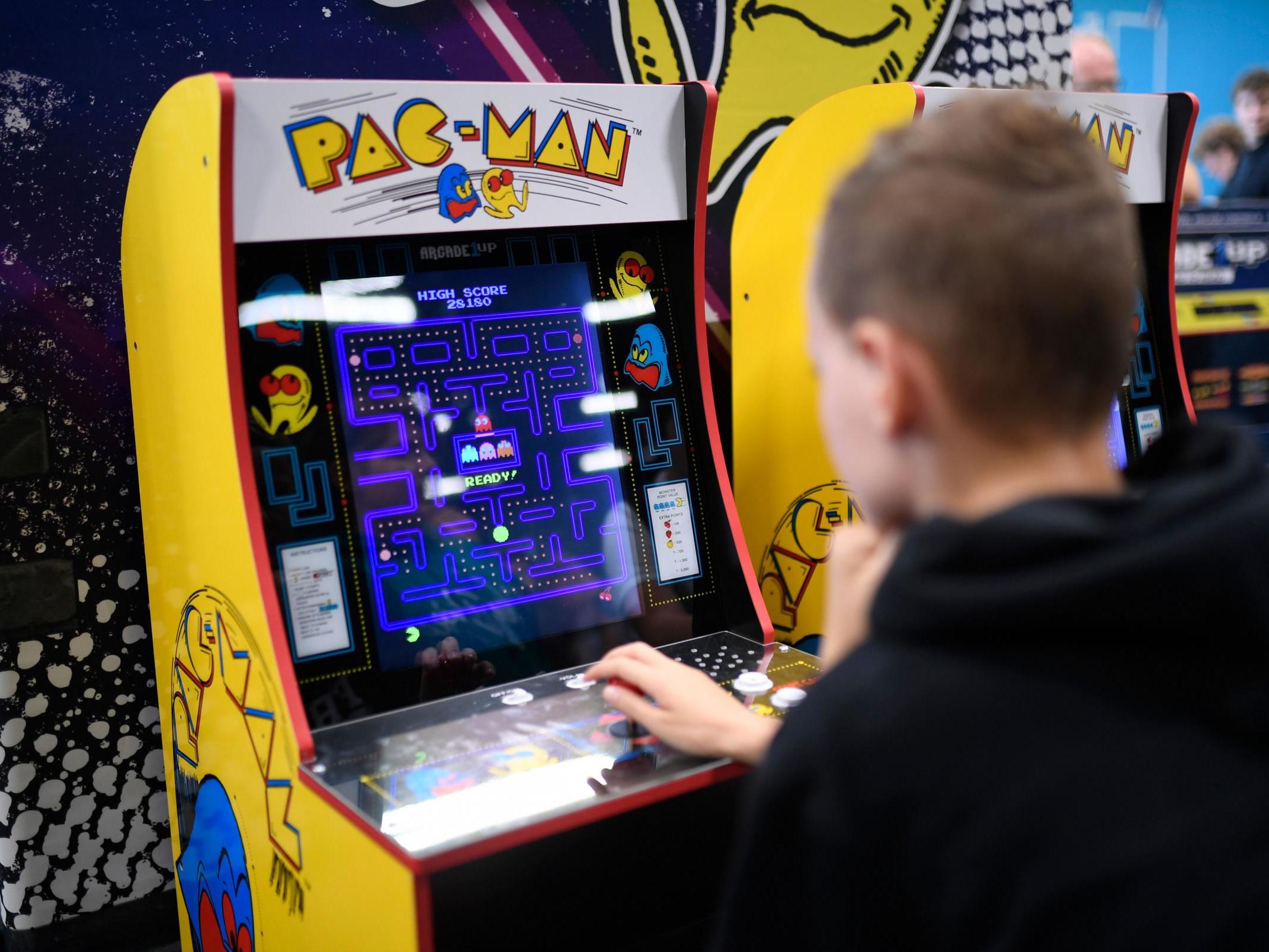From pizza to Popeye: How Pac-Man drew from pop culture to become the face of 1980s arcade games
Namco game designer Toru Iwatani took the world by storm with his simple but addictive creation, which turns 40 today. Louis Chilton discusses some of the game’s many influences

It was 22 May 1980, and gaming was about to get a whole new face. It was a face that was perfectly round and electrically yellow – the face of Pac-Man, as envisioned by Namco game designer Toru Iwatani. And it was about to take over the world.
“It might be a bit of a stretch to use a Beatles comparison,” Iwatani told Time in 2015, “but if the song ‘Yesterday’ is looked at as THE standard musical number for music, then I think Pac-Man is THE standard for games.”
While Iwatani didn’t quite pull a John Lennon and suggest that Pac-Man was more popular than Jesus, he might have laid claim to something similarly impressive: eventually earning more than $1bn in revenue, Pac-Man took in more money than the original Star Wars.
Pac-Man would leave an indelible mark on gaming. It can be seen both in the lazy knock-off games that emerged during the height of Pacmania, which reportedly amassed just as much money as the genuine article, as well as in its more legitimate heirs, the games of today that make use of some of Pac-Man’s innovations like power-ups and cut-scenes.
However, Pac-Man itself was also the product of myriad influences, borrowing its ideas from an eclectic mix of sources. Most famously, there is Pac-Man’s simple, distinctive appearance – which Iwatani says he based on a pizza with a slice missing. He had already planned to include food in the game – Pac-Man was designed with a universal, non-gendered audience in mind, and what could be more universal than eating food? – so the idea for Pac-Man’s design was fortuitous.
Iwatani told Time: “While thinking about the word ‘eat’ when taking a piece of pizza, I saw that the rest of pizza looked like a character, and that’s how Pac-Man’s iconic shape was created.”
The designer has said that Pac-Man’s ability to eat objects and power up – a novel idea at the time – was inspired by the classic cartoon Popeye, in which Popeye would famously down cans of spinach to instantly bolster his muscles.
The ghosts, which chase Pac-Man through each level’s maze, were based on the Japanese manga Little Ghost Q-Taro, which Iwatani read as a child. Designed in the Japanese style of exaggerated cuteness known as kawaii, the kid-friendly ghouls were also influenced by Casper the Friendly Ghost.
The sound effect Pac-Man makes while traversing the maze was modelled on the sound Iwatani made while eating fruit, he told CNN. “I asked for a game version of the typical Japanese mimetic words ‘Paku Paku’ that’s commonly used to describe people eating food,” he explained. “I described the ‘swallow’ sound effect that I wanted to [sound designer] Kai-san by eating fruit, and by making actual gurgling sounds.”
In the same interview, he identified another inspiration for the game: the classic Hanna Babera cartoon Tom and Jerry. “The relationship between Pac-Man and the ghosts is one that’s meant to pit them against each other but only in a very superficial sort of way, that stirs up no real hatred,” he added.
While Pac-Man is sometimes thought of as a relic of the Eighties – and some of its inspirations are now nearly a century old – the game’s appeal remains strong as it celebrates its 40th anniversary. It was a game borne of one man’s fascination with food; for years, it had everyone eating out of its hand.
Subscribe to Independent Premium to bookmark this article
Want to bookmark your favourite articles and stories to read or reference later? Start your Independent Premium subscription today.

Join our commenting forum
Join thought-provoking conversations, follow other Independent readers and see their replies